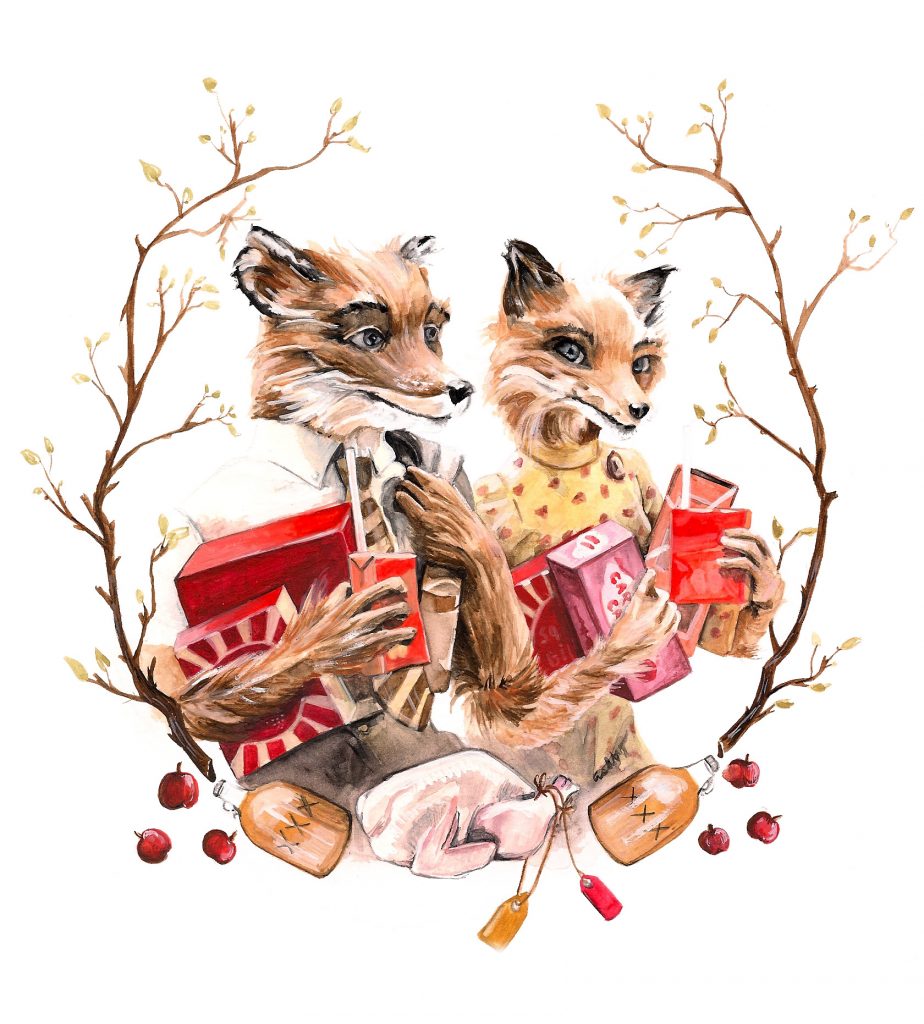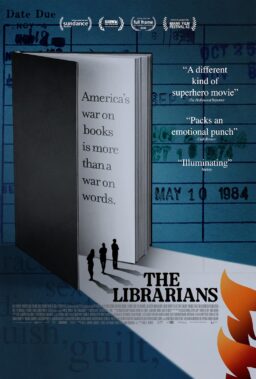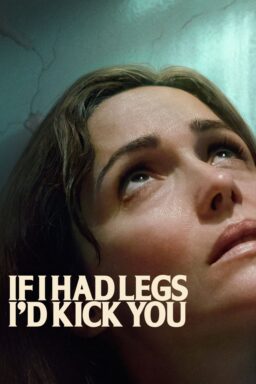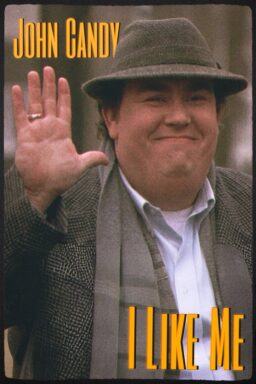We are pleased to offer an excerpt from the April edition of the online magazine Bright Wall/Dark Room. The theme of their April issue is Literary Adaptations, and in addition to Ethan Warren’s piece below, the issue also features new essays on “Little Women” (2019), “Carol,” “Burning,” “Zazie dans le Métro,” “Blow-Up,” “The Prime of Miss Jean Brodie,” “The Dead,” and more.
You can read our previous excerpts from the magazine by clicking here. To subscribe to Bright Wall/Dark Room, or look at their most recent essays, click here. The above art is by Brianna Ashby.
“Most directors,” Roald Dahl once said, “are monstrous, beastly egomaniacs with no taste and no knowledge of how to make a movie.”
In 1971, Dahl deemed Mel Stuart’s Willy Wonka and the Chocolate Factory “crummy,” and declared Stuart himself to have “no talent or flair whatsoever.” When offered the chance two decades later to give feedback on the screenplay for Nicolas Roeg’s adaptation of The Witches, Dahl’s notes were characterized by such terms as “AWFUL” and “STUPID AND USELESS;” the finished film left him “appalled.” Dahl considered removing his name from both projects and used TV and print interviews to dissuade the public from seeing Stuart’s film, a stunt he threatened to repeat with Roeg’s before being placated by producer Jim Henson.
“He hated people in the movies,” Dahl’s agent, Murray Pollinger, would later recall. “Always.”
What bothered Dahl most, it would seem, was when directors chose to stray from his original work. Stuart, he complained, had removed “a good deal of the bite” from his text, while Roeg received a letter excoriating him for allowing the novel’s dark ending to be swapped for a “trite” happier one. “I may not know as much about making films as you,” Dahl sneered at Roeg, “but I know a hell of a lot about plot…your ending is wrong.”
Dahl died in 1990, shortly after The Witches arrived in theaters, leaving his widow, Felicity, to approve future adaptations of his work. “I think Roald would have been delighted,” she said of the 1996 Disney production of James and the Giant Peach, the first adaptation to follow his death and one he fought against during his life. While the Dahl adaptations that have ensued in the past quarter-century range in virtue—from Danny DeVito’s winning but thoroughly Americanized Matilda to Tim Burton’s garish Charlie and the Chocolate Factory to Steven Spielberg’s listless The BFG—it’s hard to envision Dahl granting his approval to any of them if only for their deviations from his original stories.
The great mystery, however, is what Roald Dahl might have made of the best film ever adapted from one of his books, the film that left his work more intact than any other while simultaneously inverting its perspective and retrofitting it to align with one of the most distinctive voices in modern American film—a voice that might appear entirely dissimilar to Dahl’s but may yet be a kindred spirit in the subtlest and most significant of ways.
—
Virtually the entire plot of Roald Dahl’s 1970 novel Fantastic Mr. Fox is faithfully represented in Wes Anderson’s 2009 cinematic adaptation. At the novel’s outset, three farmers—Boggis, Bunce, and Bean; one fat, one short, one lean—have grown exasperated with the namesake carnivore, who routinely pillages their storehouses in order to bring home food for his family. The farmers execute a vicious mechanical assault on the Fox burrow, driving the family deep underground. All hope seems lost as the Foxes—along with their neighbors, including the Badger, Mole, Rabbit, and Weasel families—begin succumbing to the effects of malnutrition. Regretting that his actions have caused such suffering, Mr. Fox mounts a daring mission, raiding all three farms alongside his children and his friend Badger. In the end, Mr. Fox successfully secures enough food to rescue his community, and in the process creates a network of tunnels that will enable them to live happily, and well-fed, ever after.
Fantastic Mr. Fox is an ideal children’s story, a simple tale of charming heroes bedeviling gruesome villains; at just under 10,000 words (about three times the length of this essay), it can be comfortably cleared in a few nights of bedtime reading. It’s exactly this rail-thin yet sturdy plot—more streamlined than James and the Giant Peach or Matilda yet more conventionally shaped than The Twits, a Dahl novel of similar length that’s struggled through decades of attempted adaptation—that makes Fantastic Mr. Fox an ideal vehicle for free interpretation. And, as anyone familiar with the director’s famously imitable style can immediately identify, it’s exactly this freedom that Wes Anderson took advantage of, using the events of Dahl’s book as a core from which to spin his own web of personal style and thematic concern. “Dahl had [Mr. Fox’s] tail get shot off,” Anderson notes to Matt Zoller Seitz in The Wes Anderson Collection. “We made it into a necktie. That might basically describe the collaboration.”
For as many riffs and flourishes as Anderson adds, his fidelity to Dahl’s story is often surprisingly meticulous. Sequences that might seem at first blush to be pure Anderson are, in fact, taken virtually whole-cloth from Dahl—Badger’s propulsively precise report on the personalities of Boggis, Bunce, and Bean may be in line with similar deadpan-absurd briefings throughout the Anderson oeuvre, but it’s taken essentially word-for-word from the book’s opening pages. Even the specific laconic position in which Anderson’s Rat is found in Bean’s cider cellar—not to mention sartorial choices that fit in seamlessly alongside Anderson’s deceptively simple but instantly iconic costume designs—perfectly mimics original illustrator Donald Chaffin’s depiction of Dahl’s “saucy” rodent.
Within this fidelity, however, Anderson finds the pockets into which he might inject his own voice, expanding Dahl’s work like a donut pumped full of mashed goose liver for Bunce’s supper (a practice accomplished manually on the page, and via complex steam-powered machinery onscreen). Where in the novel, rat’s sauciness is defined as a general inebriated entitlement, Anderson renders the character as a menacing dandy, a creature prone to balletic switchblade duels and possessed of retrograde attitudes on female sexual agency—a bias for which he’s taken to task by Mr. Fox in the midst of their brawl, a typically Andersonian moment of decorum abutting explosive instinct.
The case of rat serves as a typical study of Anderson’s adaptive approach in this, his sole film to date explicitly based on a preexisting work. Anderson (along with co-writer Noah Baumbach, with whom he had previously collaborated on The Life Aquatic) obeys the letter of faithful adaptation law but plays fast and loose with the spirit. A comprehensive list of Anderson’s invented elements would require thousands of words, from such minor whimsies as the hyperbolically byzantine sport of whack-bat to the more significant decision to eliminate three of Mr. Fox’s children and characterize the remaining child—nameless on the page but dubbed Ash in the film—as moody and combative rather than the adoring cipher following at his father’s heels in the novel. More significant than any of these specific inventions, however, is Anderson’s crucial decision to invert the story’s perspective on its protagonist.
Roald Dahl depicts Mr. Fox as he’s seen by his children, presenting the character in broad, bright strokes with little need for shading—he heroically steals to provide for his family, and when he realizes the consequences of his actions, he heroically steals in order to find a new way to provide for them. It’s a characterization that aligns intuitively with a child’s conception of the prototypical caregiver: Mr. Fox “is brave, kind, and fearless,” writes one young critic in a review submitted to The Guardian in 2014. “He is a loving fox who cares about everyone more than himself and would never ever let anyone suffer.” It’s an apt summation of Dahl’s depiction, and while there are hints of arrogance in his Mr. Fox’s behavior—upon burrowing into Boggis’ chicken house from below, a “prancing and dancing” Mr. Fox lauds himself for achieving the feat on the first try—such self-regard reads as entirely earned by virtue of the child’s-eye view of events.
In Anderson’s conception, Mr. Fox’s motivations are substantially more complex, not so much altering Dahl’s story as shifting its perspective. If Dahl conjured an adult as seen from a child’s height, Anderson conjures him as seen at eye-level. Anderson’s Mr. Fox steals for the thrill of it; it’s clear from his eventual adoption of a journalism career that in this world, there are as many ways for an animal to provide for his family as there are for a human. His clandestine return to a life of poultry theft is linked not to immediate physical survival so much as his own perceived spiritual survival, an effort to maintain a connection to his own status as a “wild animal,” with this crisis transparently standing in for a typically Andersonian crisis of male arrested development.
Were it not for Mr. Fox’s fraught relationship with his son, the film could be read as a simple expansion of Dahl’s story, one broadened to encompass details invisible to a child’s eye. The adult perspective is foregrounded by Anderson as early as the prologue, which introduces a childless Mr. and Mrs. Fox as joyfully carefree partners in crime before cutting forward two years (or, as we’re informed by on-screen text, 12 fox-years), leaving wistful echoes of a past so intangible to a child that Dahl doesn’t bother to include any hint of the same, favoring a view of events with strict borders reflecting a childlike immediacy of perception. If Roald Dahl told the story of a fox who provides for his family, then Anderson told the story of a fox with a family to provide for—the difference may be subtle, but it’s essential.
For all Dahl’s frustration with cinematic revisions to his storytelling, Anderson’s integrity as an artist (as well as his metatextual efforts to honor Dahl’s legacy, which include modeling many of the film’s sets on the author’s Great Missenden environs, and naming Mrs. Fox—nameless in the novel—Felicity after Dahl’s own wife) could conceivably have swayed the cantankerous writer; his criticism of Mel Stuart’s perceived lack of “flair” could certainly not be applied to Wes Anderson. But there is another persistent Dahl frustration that seems harder to speculatively assuage: “What narks me tremendously,” Dahl said in a 1975 interview, “is people who pretend they’re writing for young children and they are really writing to get laughs from adults.”
Anderson’s film is unmistakably positioned as family entertainment, but the distinctly adult concerns serve as a clear barrier to entry for children, presuming an appreciation of not just midlife ennui but deadpan comedy of manners. Where conventional children’s fare will often smuggle in jokes meant to elicit chuckles from parents (think Shrek 2’s televised chase between police and a literal white bronco) while maintaining a simple storytelling flow for the intended general audience, the comic highlight of Fantastic Mr. Fox—the use of “cuss” as an all-purpose curse word, allowing for lines from “What the cuss” to “You scared the cuss out of us” to “This is going to be a total clustercuss”—requires viewer awareness of the finer points and loopholes of linguistic propriety, a likely stumbling block to any pre-adolescent. The film’s user comments at family-oriented review site Common Sense Media offer a wide spectrum of parental disbelief that Fantastic Mr. Fox was pitched to children, from the neutral—“Though kids are welcome,” writes one user with children aged 7 and 10, “this is absolutely a movie for grown-ups”—to the irate—“The use of weapons, blatant robbery, marital disputes, etc. is greatly inappropriate for my daughter,” writes another user of their 7-year-old. “After the first five minutes of watching the movie, she was put off.”
For all its deference to Roald Dahl and his novel, if Fantastic Mr. Fox is so likely prohibitive to a child’s enjoyment, then it’s difficult to argue its primary value is in conversation with Dahl’s work. Fantastic Mr. Fox is a Wes Anderson film first and foremost, one in conversation with no career so much as his own. And yet while this fact may render it questionably faithful to Dahl on a surface level, it opens up a broader line of resonance that may locate it spiritually in relation to Dahl’s ethos on a far deeper one.
—
If a typical Anderson protagonist is either a man struggling to meet society’s definition of maturity, a schemer, a delinquent father, or—most often—some combination thereof, Mr. Fox sits at the precise intersection of the three. His obliviousness to Ash’s pain as he lauds his more conventionally impressive nephew Kristofferson carries vivid echoes of Royal Tenenbaum’s casual dismissal of his own children, while his evident discomfort with Ash’s ill-defined “difference” presages the anxiety of Suzy Bishop’s parents in Moonrise Kingdom as they cope with their own “very troubled child.” His carefully calibrated plans call to mind the fastidious criminality of Bottle Rocket’s Dignan as well as the solipsistic micromanagement of The Darjeeling Limited’s Francis. His despondence over past glory echoes over-the-hill aquatic adventurer Steve Zissou (himself a deadbeat father figure), while his alienation from domestic life conjures the self-destructive lethargy of Rushmore’s Herman Blume. Perhaps appropriately for the first protagonist he was able to literally conjure from thin air, Mr. Fox serves as Anderson’s ex post facto urcharacter.
Much has been made of the choice to cast the film’s animal characters as American and their human antagonists as British, and while it serves as convenient shorthand delineating the difference in species (a trick of categorization similar to Martin Scorsese’s choice in The Last Temptation of Christ to cast Americans in Jewish roles and British performers as Romans), the more significant factor in the film’s Americanism is Anderson’s consequent ability to graft onto Dahl’s story his own longstanding fascination with the particularly American ideal of the frontier spirit. Mr. Fox’s introduction is underscored by “The Ballad of Davy Crockett,” rooting his “wild” self-image in a midcentury fetishization of freedom as embodied by the “Crockett craze” that left children across the country idolizing “the king of the wild frontier,” dreaming of adventures on the untamed plains from the comfort of their middle class homes. It’s imagery that links Anderson’s retrofitting of Dahl’s characters to both his earlier work (Eli Cash, the most defiantly immature of The Royal Tenenbaums’ overgrown adolescents, self-consciously styles himself in kitsch Old West garb) and the works to come—with his perpetual coonskin cap, Moonrise Kingdom’s resolutely individualistic Sam Shakusky is clearly in the throes of the Crockett craze himself.
Even Anderson’s works that pay less explicit homage to the lingering echoes of manifest destiny possess a fascination with classical hallmarks of boyhood: Swiss army knives are bestowed as items of great significance in both Rushmore and Moonrise Kingdom, signifiers of an Eisenhower-era ideal of budding American masculinity, while Anderson told Richard Brody in a 2009 New Yorker profile that Fantastic Mr. Fox is rooted in “a certain nostalgia” for a time when children didn’t wear helmets when riding bicycles. And though they have a very adult ability to harm those around them, the cruelties of his male characters are often motivated by a deeply childlike sense of wounded pride and social anxiety—a desperate need, as Mr. Fox tells his wife in his lowest moment, for “everybody to think I’m the greatest, the quote-unquote Fantastic Mr. Fox. And if people aren’t knocked out and dazzled and slightly intimidated by me, I don’t feel good about myself.” The men at the center of Anderson’s films may be prone to brawling, but they’re just as prone to pouting, attempting whatever adult version they can of taking their ball and going home.
If Anderson’s films and their characters tend towards the wistful and nostalgic, their longing for the past is borne less of yearning for a happier time than for a time of possibility, when an alternate path towards greater happiness might still have been available. Anderson has no interest in idealizing childhood; he is a filmmaker unusually aware of the potential for pain and anger in the interiority of young people, and this awareness resonates with a personal theory Dahl once put forth: “that all small children are constantly at war with adults.”
Dahl’s stories make this universal war explicit, with children suffering fantastically outsized abuses at the hands of their ostensible protectors, necessitating either escape (as in James’ flight via giant peach from his domineering aunts Sponge and Spiker) or retaliation (as in Matilda’s psychokinetic torment of her sadistic teacher Miss Trunchbull). These outrageous cases, however, serve as cathartic heightening of the painfully naturalistic common childhood condition Dahl identified. If children are drawn to stories that allow them to process their own confusing urges and experiences, then Dahl’s stories must endure less for their delight in the revolting than for their keen awareness that childhood alienation is as worthy of consideration as its adult counterpart, if not more so for lack of decades’ worth of developed coping mechanisms.
Moonrise Kingdom, Anderson’s direct follow-up to Fantastic Mr. Fox, is his first film to focus on pre-adolescent protagonists, and its compassion for childhood despair aligns it with Dahl’s canon in ways Fantastic Mr. Fox, with its focus on adult issues, never attempts. Tilda Swinton’s officious social services agent cuts a distinctly Dahl-esaue figure, even if her cruelties are borne more of bureaucratic dispassion than outright sadism, while the story’s moments of intrusive violence—the incidental death-by-arrow of Camp Ivanhoe’s beloved terrier Snoopy, Suzy’s stabbing of Redford with the perversely specific “lefty scissors,” and the more indirect act-of-God horrors of the multiple lightning strikes, to name just a few—calls to mind the fanciful but no less horrific tragedies of Dahl’s stories (long before his adventure aboard the giant peach, James’ parents die in a sudden and unexplained rhinoceros attack). But where outright battles between children and adults are the focus of only one other Anderson film—Rushmore, with its pathetic dead-end feud between teenage Max Fischer and over-the-hill Herman Blume over their perceived entitlement to the attentions of eminently eligible Rosemary Cross—the sense of a broader spiritual war between childhood and adulthood motivates his entire filmography.
Though the young protagonists of Dahl’s stories may win their battles, on a grand scale, all children must lose the war with adulthood thanks to the unstoppable process of aging. This essential wistfulness may be covert in Dahl’s storytelling, but it’s overt in Anderson’s. Each of Anderson’s stories is concerned in some way with life’s painful progress, be it the epochal tragedies of The Grand Budapest Hotel or the gentler turning points of Rushmore and The Life Aquatic, moments when headstrong characters must sacrifice their wilfulness in service of securing a more emotionally whole future. And it’s this smaller-scale progress that Mr. Fox journeys towards as he moves beyond his childish obsession with mythic wildness in service of finally becoming the character Dahl’s young readers perceive—“a loving fox who cares about everyone more than himself.”
This turning point for Mr. Fox comes in the film’s most striking sequence: having survived a brutal melee with the squadron commanded by Boggis, Bunce, and Bean, Mr. Fox escapes on a motorcycle alongside Ash, Kristofferson, and his genial constant companion, Kylie the opossum. Pulling over on the side of the road, the characters find themselves at the perimeter between their pastoral homeland and a harsh mountainous landscape. Here, Mr. Fox at last comes face-to-face with his wild counterpart in the form of a silhouetted wolf, the creature of which he has long claimed a phobia (an anxiety that renders his professed yearning for the wild life somewhat suspect). After attempting to converse with the wolf, reaching out to the silent creature on his own comfortably domesticated terms, Mr. Fox is suddenly overcome with emotion—a sheen of tears glosses his eyes, one of those breathtaking moments hidden within each Anderson film when all mannered artifice falls away in favor of raw emotion—and he raises a paw in salute, a gesture the wolf returns. Having been acknowledged at last by this world to which he feels inexorably drawn, Mr. Fox achieves personal synthesis and accepts the seriousness of his responsibility to those he cares for.
The process of growing up, writes Michael Chabon in his introduction to The Wes Anderson Collection, is defined by the understanding “that the world has been broken for as long as anyone can remember,” and the need to “reconcile this fact with the ache of cosmic nostalgia…an intimation of vanished glory, of lost wholeness, a memory of the world unbroken.” In order for Anderson’s characters, or any of us, to move successfully into the world, Chabon concludes, “the question becomes: What to do with the pieces?”
The happy ending of Wes Anderson’s Fantastic Mr. Fox is distinctly bittersweet: no longer able to survive in their natural habitat, the animals move into Boggis, Bunce and Bean International Supermarket, adopting a synthetic lifestyle that—as Mr. Fox acknowledges in his closing remarks—may be a compromise, but at least promises a future. When he raises a final juice box toast alongside his friends and family, it’s “to our survival.”
This acceptance of life’s finite horizon is far more acidic than the ending of Dahl’s novel, which sees the animals celebrate the new tunnel system that prevents the risk of stepping above ground ever again—“Who wants to go out anyway?” Mr. Fox asks. The difference could easily be chalked up once more to Anderson shifting Dahl’s story into alignment with his own preferences. But the change is not a reversal of Dahl’s intent; it’s a restoration.
Dahl’s original manuscript, which Anderson and Baumbach discovered among his papers during a two-week research visit to Great Missenden, ended with the animals not fully displaced into the supermarket but nonetheless tunneling into it as their new source of sustenance: “They are still doing it today,” Dahl initially concluded. “Every night, Mrs. Fox makes out a shopping list. Every night, they all go shopping on Main Street. They get anything they want. And the store-keepers are still wondering where all the stuff goes.” Dahl’s editors at Random House were concerned that this ending—happiness found in deceiving the innocent, with Dahl’s supermarket being independent rather than owned by the farmers—would prove controversial among educators and caretakers, with the final compromise: steal, but only directly from the antagonists—agreed upon for its vague resemblance to a moral (“You cannot prevent others from securing sustenance,” in the words of peace-brokering editor Fabio Coen, “without yourself paying a penalty”).
Anderson’s adapted ending isn’t faithful to the published novel, but it’s faithful to the author’s intent. Adaptation—be it from the page to the screen or the familiar to the unknown—is a deceptively complex feat, one that can only be accomplished with great cunning and ingenuity. It’s easy to fail, but when it’s done right—well, there’s something kind of quote-unquote fantastic about it, isn’t there?











